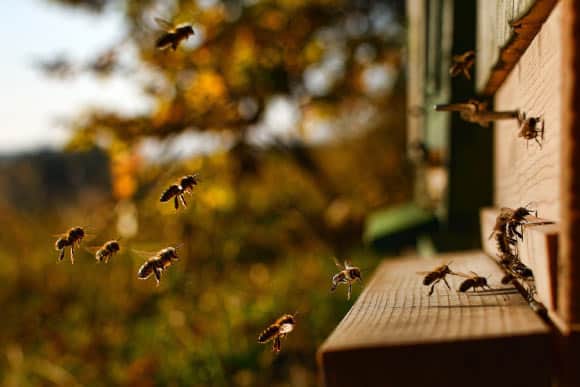Call it a 205th birthday present: A beetle collected by Charles Darwin was declared a new species on the anniversary of his birth, February 12, 1809, a new study says. The beetle, dubbed Darwinilus sedarisi, after the naturalist and the author David Sedaris, is also a new genus of rove beetle—a group of highly diverse insects. The beetle was collected by Darwin in Argentina but had gone unnoticed since then.
“There is a famous Darwin quote about beetles,” said Stylianos Chatzimanolis, an entomologist at the University of Tennessee at Chattanooga, who led the study of the new beetle and came up with its name. Darwin “said that ‘Whenever I hear of the capture of rare beetles, I feel like an old war-horse at the sound of a trumpet.’ I think Darwinilus sedarisi certainly qualifies as such a discovery.”
Chatzimanolis chose Sedaris as the beetle’s partial namesake “as an appreciation for his fascination with the natural world.” Darwin found the beetle in 1832 in the coastal region of Bahía Blanca, Argentina (map), during his well-known voyage on the HMS Beagle.
“Darwin was fascinated with the sheer diversity of rove beetles,” said Chatzimanolis, whose study was published February 12 in the journal ZooKeys.
But there were some specimens Darwin never got to. While combing through specimens on loan from London’s National History Museum, Chatzimanolis noticed that one of the beetles had antennae with an unusual saw-toothed appearance.
Upon careful study, he discovered that the insect was not only a new species—but also that Darwin himself had found it.
“I was both in awe and scared to death handling the specimen, so I really tried to minimize time spent handling it,” he wrote on his blog.
“Finding a new species is always exciting,” he said in a statement. “Finding one collected by Darwin is truly amazing.”
Mystery Beetle
Darwinilus sedarisi joins about 58,000 known species of rove beetles. That’s “more than ten times the number of mammals in the world, yet we know very little about them,” Chatzimanolis said.
Chatzimanolis searched North American and European museums for more specimens of the beetle but found only one other: a beetle collected in Río Cuarto, Argentina, before 1935 and housed at the Museum für Naturkunde der Humboldt Universität.
It’s odd to find only two specimens, but, he suggested, it’s possible that the beetles are simply elusive, hiding in refuse piles of ants and other insects. Just as likely, though, is that the species has plummeted in number—most of its Argentine habitat is now agricultural fields.
“One certainly hopes,” Chatzimanolis said, “that a newly described species is not already extinct.”
This article was written by Christine Dell’Amore for National Geographic. Lead Image: The beetle was collected by Darwin in Argentina but had gone unnoticed since then. PHOTOGRAPH BY NATURAL HISTORY MUSEUM, LONDON.
What you can do
Support ‘Fighting for Wildlife’ by donating as little as $1 – It only takes a minute. Thank you.







Leave a Reply